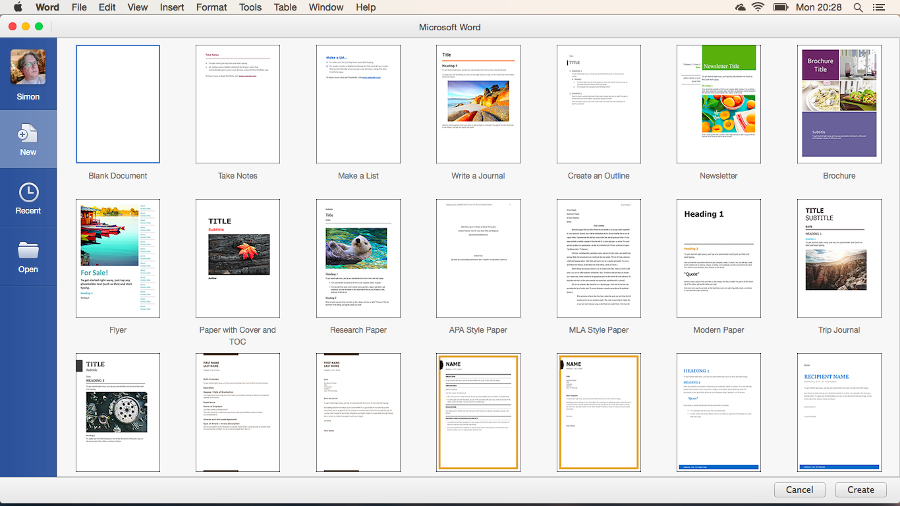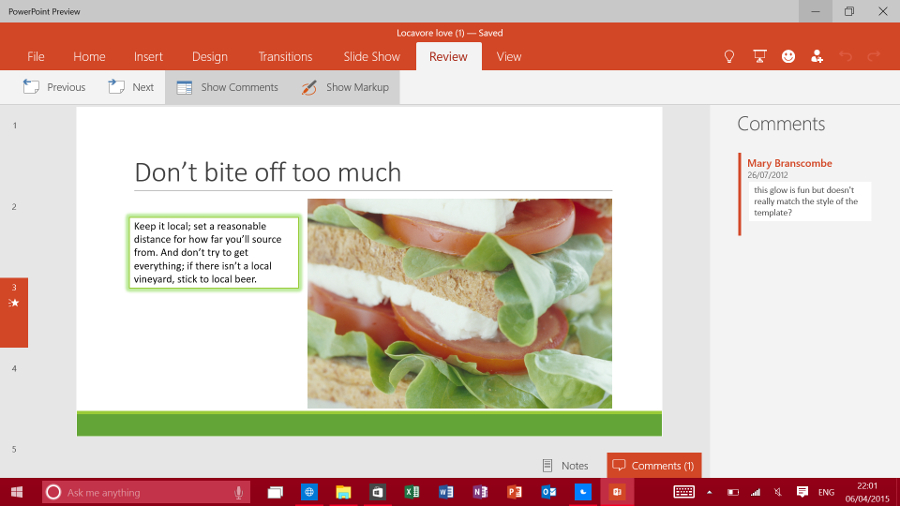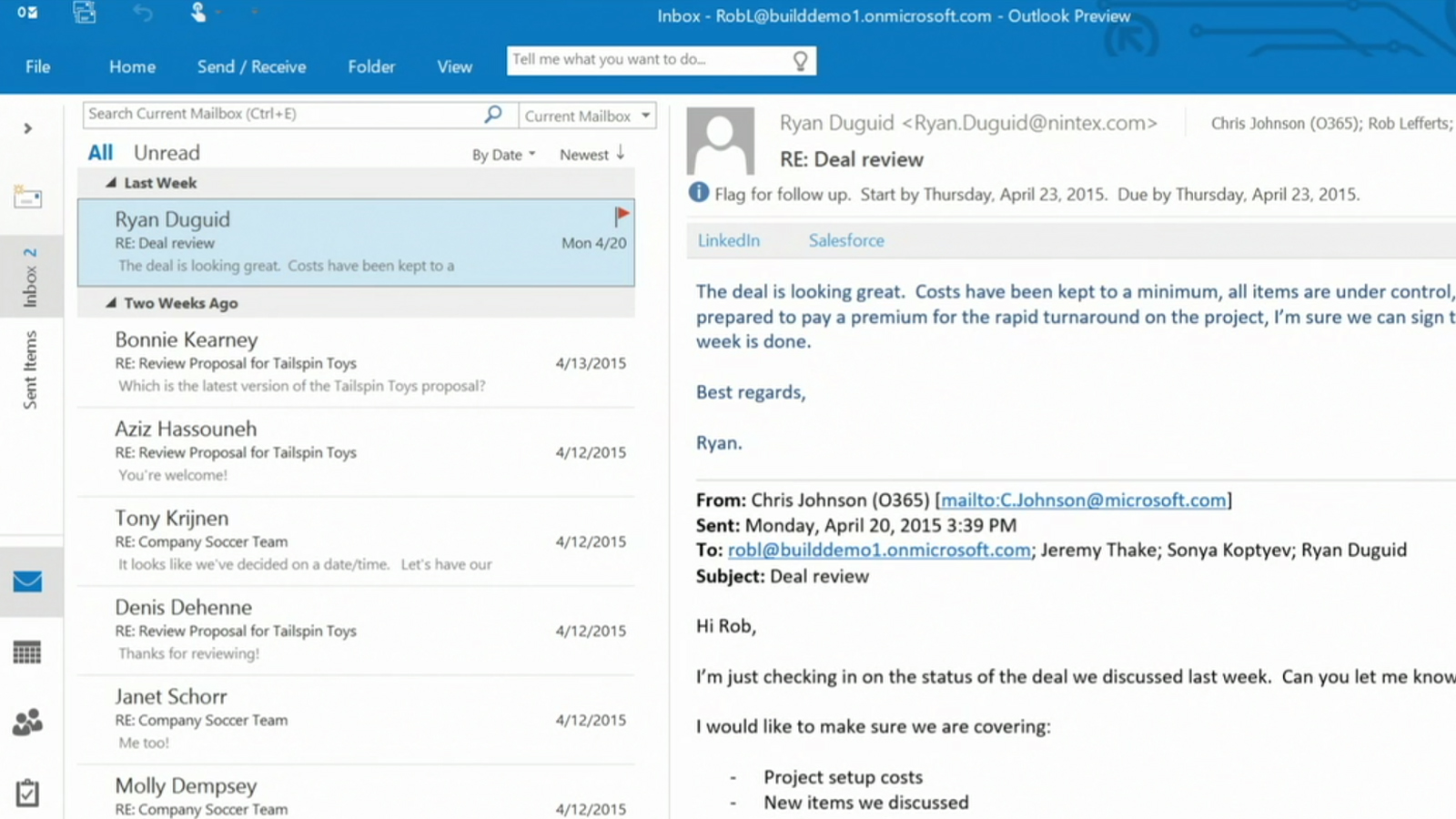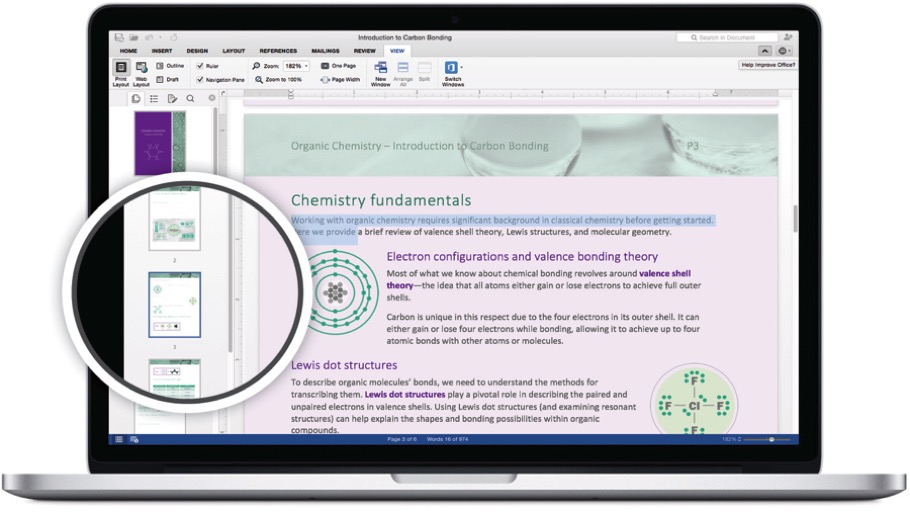Microsoft Office 2016: Everything we know
Everything we know about this version of Office
Microsoft has also brought a new version of the suite to the Mac, finally, after Mac users have been left with the 2011 edition for the last half decade. Office 2016 for Mac includes Word, Excel, PowerPoint, and also Outlook for Mac and an updated version of the free OneNote for Mac app, and it's out now, ahead of the release of the Windows version. Yes, Mac users get the suite first, which is certainly something of a statement from Microsoft – namely that Apple users are important to them.

Office 2016 for Mac has witnessed the introduction of a range of new features designed for Apple's computers, including full support for Retina Displays and multi-touch gestures, plus the user interface has been overhauled and brought up to date as was badly needed, delivering the ribbons and task panes of the Windows Office applications – though it still sticks firmly with the Yosemite look, of course.
New Rights Management Services are present in the suite, allowing you to set documents to expire after a certain date, or prevent an email from being forwarded anywhere else (as with Windows). Office 2016 for Mac also very neatly bakes OneDrive into the mix for Mac users.
Word on the Mac boasts a ton of new design and collaboration options, with Excel offering an improved formula builder and deeper analysis capabilities with new PivotTable slicers. PowerPoint has an improved Presenter View and new animation pane, with Outlook having push mail support and an improved conversation view to keep your threaded messages better organised.
Office 2016 for Mac has been honed by over 100,000 pieces of feedback which were submitted over four months of the preview program, during which time there were seven updates to the suite. You can expect regular updates going forward as well, with Microsoft having promised new features and release updates at least once every quarter.
The only drawback, perhaps – there will be something of a learning curve for Mac Office stalwarts, but no pain, no gain, as they say…

Microsoft's default choice for Office is the subscription model, which is the company's preferred method of delivery and currently maintains 24 different SKUs (stock keeping units) spread between home, education, enterprise, government and non-profit.
Are you a pro? Subscribe to our newsletter
Sign up to the TechRadar Pro newsletter to get all the top news, opinion, features and guidance your business needs to succeed!
The company currently has around 9.2 million Office 365 Personal and Home users (and more than 50 million Office Online users), a tiny fraction of the estimated total 1.2 billion Office users that have deployed the productivity suite. Still, the 9.2 million figure as of last quarter represents 30% growth, Microsoft recently announced.
Going forward, the idea with Office 365 Personal is to allow one individual to connect one PC or Mac, one phone and one tablet to the service for a yearly subscription fee, allowing for usage via the cloud. However, it's designed for personal use, as the name of course suggests, and not for those who want to use the Office apps for professional purposes. For those customers who need this better functionality and more features, those are provided by Office for Windows and its touch-optimised apps for work on the move.
Microsoft also recently announced that it is investing in strategic partnerships with device manufacturers globally, and Samsung, Dell, along with other vendors (nine of them) will bring the Office app experience to Android devices later on in 2015.
All eleven of these vendors will pre-install Word, Excel, PowerPoint, OneNote, OneDrive and Skype on their Android devices, in what Microsoft describes as a move to "literally hand deliver the entire productivity suite to users around the globe." Peggy Johnson, Executive Vice President, Business Development at Microsoft, said that: "This is a big step forward for our cross-platform and cross-device services strategy, which will bring an array of Microsoft services to every person on every device."

Finally, at the recent Build 2015 conference, Microsoft revealed that it's making the Office suite into a platform, allowing developers to integrate their apps and services directly into Office 2016. In other words, you won't have to leave Word, Excel, PowerPoint, or Outlook to use third-party apps that will include the likes of SAP, Salesforce, Uber and DocuSign.
For example, the Uber add-on will allow Outlook users to set a reminder to call a car in order to get them to their next appointment, and the SAP add-on will let Excel users connect to the on-premise SAP server and import data directly into a spreadsheet.
Getting the preview version
If you want to try out Office 2016 on Windows, then you'll be pleased to hear that the Public Preview version is now available as a free download – and unlike the Consumer Technical Preview before it, users aren't required to sign up to an NDA (Non-Disclosure Agreement). Head here for more details on how to grab the preview.

As for Mac users, they can download the suite right now. However, note that Office 2016 for Mac is only available to Office 365 users currently. Those looking to make a one-time purchase of the suite will have to wait for the boxed copy to emerge in September.
If you're an Office 365 user, to download Office 2016 for Mac, go into your account and choose the appropriate option – it's as simple as that.
Note that there is also an Office 2016 IT Pro and Developer preview that offers a number of enhancements compared to the plain Office 2016, which includes:
- Data Loss Protection (DLP)
- Tweaks to Outlook (like MAPI-HTTP, Foreground network calls, lean storage footprint etc)
- Click-to-run deployment
- Macros and Add-ins
- Information Rights Management

Désiré has been musing and writing about technology during a career spanning four decades. He dabbled in website builders and web hosting when DHTML and frames were in vogue and started narrating about the impact of technology on society just before the start of the Y2K hysteria at the turn of the last millennium.